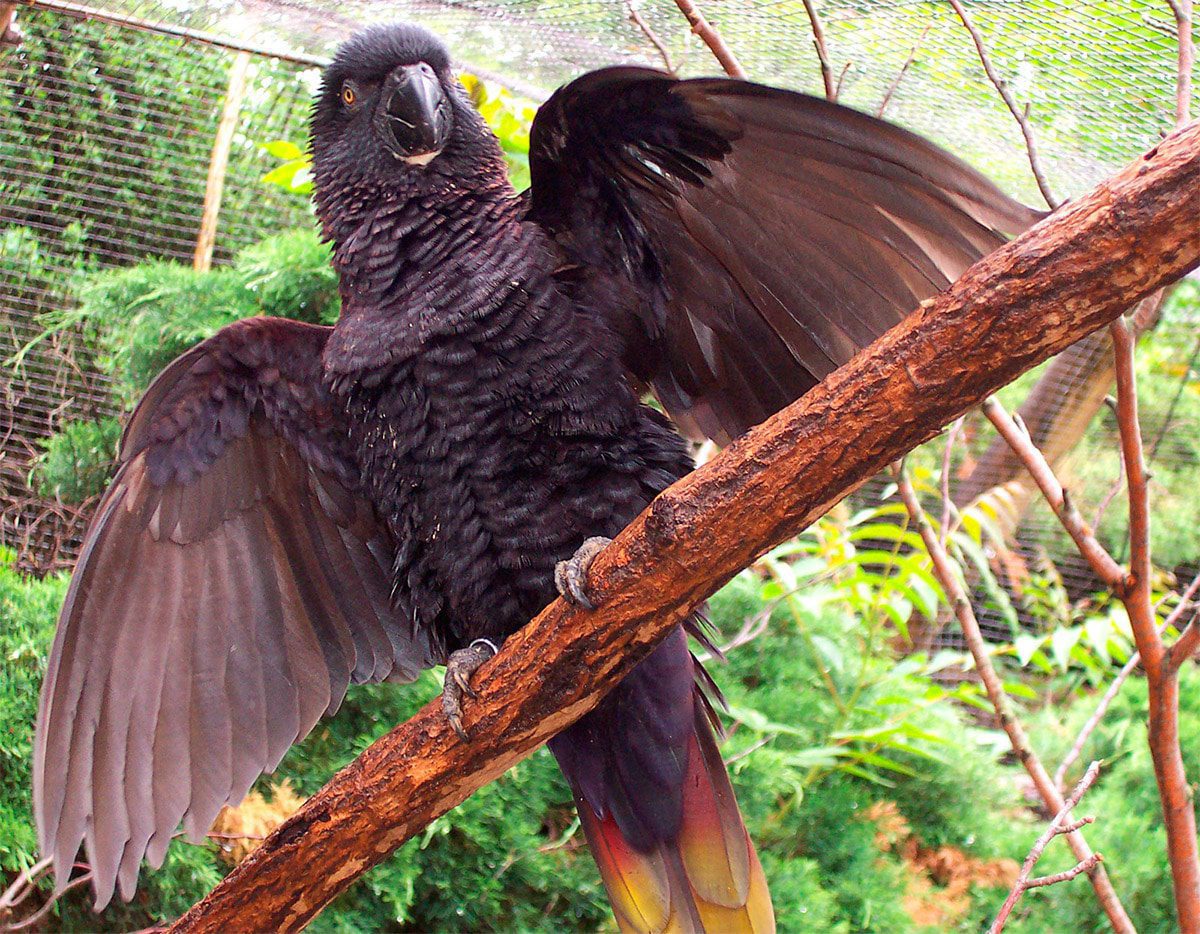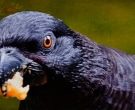Content |
|---|
Description
32 cm.. height and a weight between 230 and 260 gr.
The Black Lory (Chalcopsitta atra) It is the least colorful member of an otherwise very colorful genre. It´s, in poultry, therefore, the least popular. This is unfortunate because it is equally as interesting as the other members of the genus.
Black in color with a purplish sheen to the plumage that is highly evident in sunlight, which gives it a superficial appearance of a crow. Even their bare parts, as the nose , the skin around the eyes and at the base of the jaws, eyes and claws, they are equally dark. Rump displays a violet blue.
The underside of the tail feathers are color olivaceous with light infusions of red at the base.
The iris is orange-red, the grey legs.
The youth differ little from adults but have an eye-ring and a skin at the base of the peak which are whitish. It is grey.
There is a 3 subspecies, that differ little between if:
- Chalcopsitta atra atra: Both adults, usually black. The bluish violet rump. The feathers of the bottom of tail olive/yellow washed in red. Naked eye-ring black , black skin at the base of the peak. Orange-red eyes.
-
Chalcopsitta atra bernsteini: Red marks / purple on the forehead and thighs, less evident in females; Blue darker in the rump.
-
Chalcopsitta atra insignis: Head striped gray/blue. The front, the face, the thighs and the underside of the wings are red. The feathers of the throat and underparts with red trim. The rump is dull blue. The lower part of the tail is greyish blue. It is one of the most beautiful parrots that exist. It will be necessary to see any parrot in the light of the Sun to be able to appreciate its beauty.
It is also said that there are other subspecies, the calcopsitta atra spectabilis, resident of the Mamberiok Peninsula, but the data given are running that it was only a hybridization of the Chalcopsitta Atra and the Chalcopsitta Sintillata.
They are nomadic outside of the breeding season., and, they are sometimes found in large groups, associated with the Blackbirds, feeding together on trees in flower.
- Sound of the Black Lory.
Habitat:
The Black Lory live in the Plains, rarely above the 200 m. They are very abundant in relatively open habitats, as the mangroves near the coast, swamp forest, coconut plantations, scattered eucalyptus in the Middle areas of meadows and scrub land. From time to time come to the edge of the Woods primary or forest growth. The Black Lory is endemic to New Guinea.
Reproduction:
Most of the information has been obtained from captive birds. In the wild, most of these birds breed between December and February. In captivity, the female lays two white eggs which are incubated for about 25 days. The entire reproductive period is particularly long, lasting approximately 75 days.
The male incubates not, but sometimes it remains in the nest with the female. After birth the chicks remain in the nest approximately one 10 weeks.
Food:
The Black Lory is vegetarian. Primarily feeds on nectar and fruits. Constantly migrates in search of seasonal food. Green corn sprouts and seeds are also in their diet.. Enjoy the Schefflera shrubs.
Distribution:

This species is distributed in the westernmost part of West Papua, the Indonesian portion of New Guinea. In particular, they are in the Western Vogelkop, also on the islands of Misool (provinces of Maluku), Batanta (papua province), the Onin and Bomberai and Salawati peninsulas (West Papua), off the coast.
Between the 3 [+] Subspecies:
- Chalcopsitta atra atra: Distribution. West New Guinea
-
Chalcopsitta atra bernsteini: Distribution. Confined to the island of Misool (Indonesian) in the West of New Guinea.
-
Chalcopsitta atra insignis: Distribution. The Vogelkop, Island Amberpon, Onin, bomberai peninsulas, Northeast of New Guinea.
-
calcopsitta atra spectabilis: Distribution. mamberiok peninsula
Conservation:
This lory is evaluated as least concern on the red list of threatened species. Is included in Appendix II of CITES.
The world population is estimated at 50.000 birds.
This number is probably stable, but data are lacking to say it with certainty.
The commercial import of this species in EC was banned in 1991.
"Black Lory" in captivity:
The Black Lory It is said is among the parrots with the sweetest character. They are easy to tame. Its obvious disadvantage is acute cries that often emit. Not everyone can tolerate them. It is however unusual in captivity.
The subspecies insignis is rare, and the subspecies bernsteini practically non-existent.
Alternative names:
– Black Lory, Rajah Lory, Red-quilled Lory (ingles).
– Lori noir (francés).
– Schwarzlori (alemán).
– Lóris-negro (portugués).
– Lori Negro (español).
scientific classification:
– Order: Psittaciformes
– Family: Psittaculidae
– Scientific name: Chalcopsitta atra
– Citation: (Scopoli, 1786)
– Protonimo: Psittacus ater
Images “Black Lory”:
“Black Lory” (Chalcopsitta atra)
Sources:
– Avibase
– Photos: sciencio.com,
Goura (zoochat.com), My Birds Region
– Sounds: BAS van Balen (Xeno-canto)






